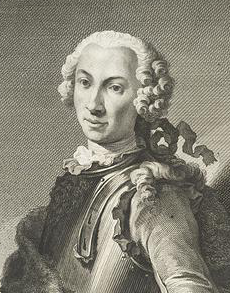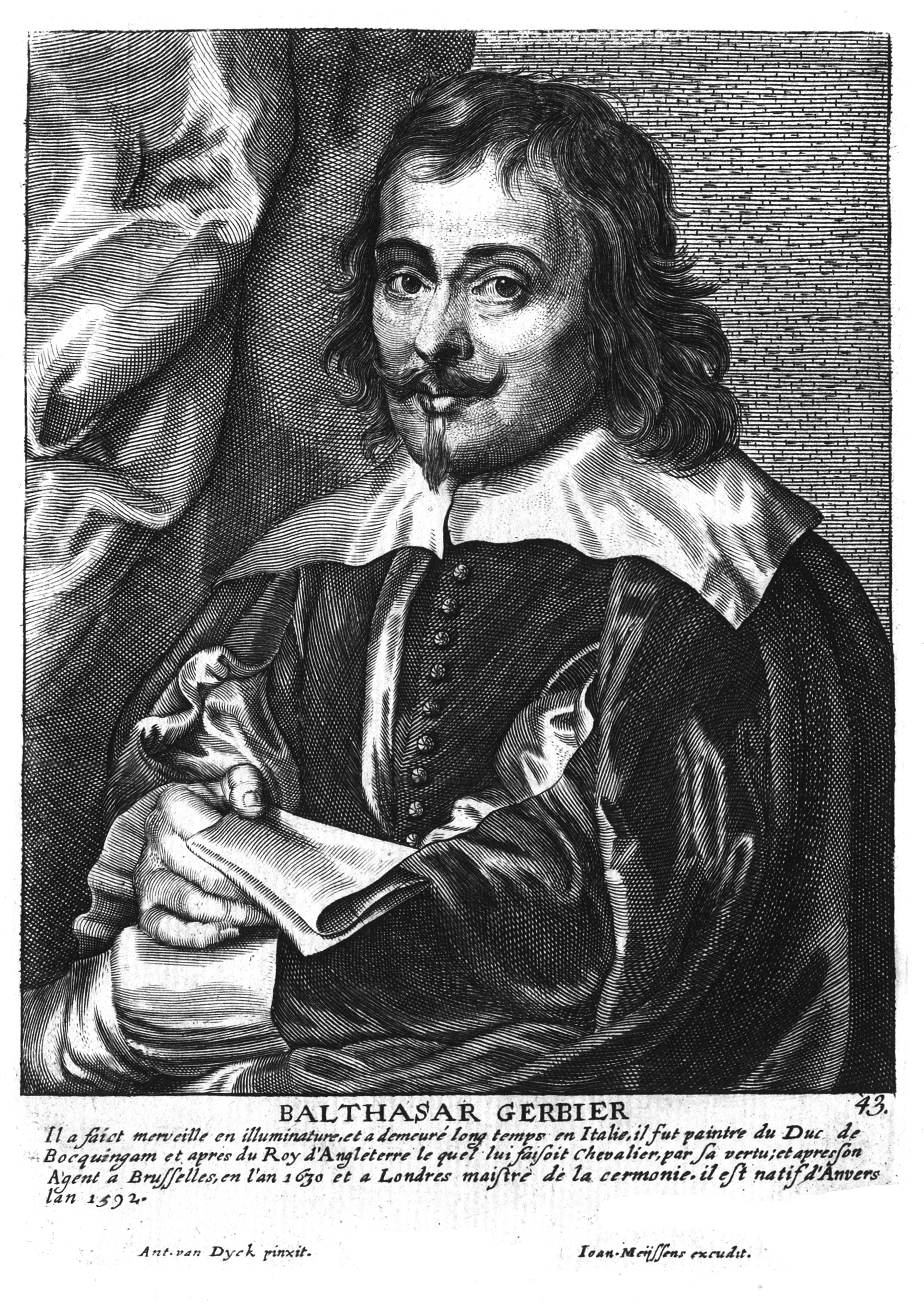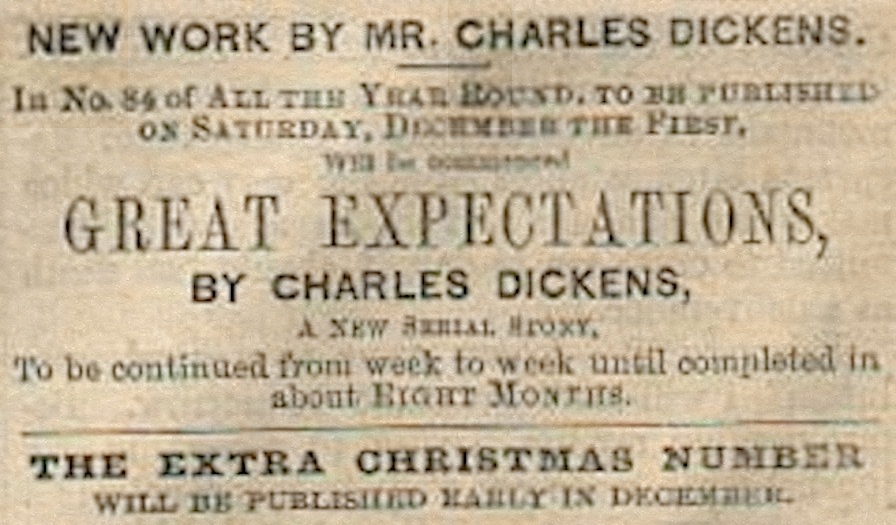|
John Woody Papworth
John Woody Papworth (4 March 1820 – 6 July 1870) was an English architect, designer and antiquary. He is chiefly remembered for "Papworth's '' Ordinary''" (1874), a reference guide to British and Irish coats of arms arranged systematically according to their design. G. D. Squibb commented in 1961 that "his memory rests more securely upon his ''Ordinary of British Armorials'' than upon any building for which he was responsible, though it is but fair to add that his professional achievements were not lightly regarded by his contemporaries". Family background Papworth was born in London on 4 March 1820, the elder son of the architect John Buonarotti Papworth. His younger brother, Wyatt Angelicus van Sandau Papworth, also became a well known architect. Career Papworth was trained as an architect in his father's office, where he remained until 1846, when his father retired. In 1837 he became, on its formation, secretary to the council of the Government School of Design at Somer ... [...More Info...] [...Related Items...] OR: [Wikipedia] [Google] [Baidu] |
Ordinary Of Arms
An ordinary of arms (or simply an ordinary) is a roll or register of coats of arms arranged systematically by design, with coats featuring the same principal elements (geometrical ordinaries and charges) grouped together. The purpose of an ordinary is to facilitate the identification of the bearer of a coat of arms from visual evidence alone. Ordinaries may take a form which is either graphic (consisting of a series of painted or drawn images of shields) or textual (consisting of blazons – verbal descriptions – of the coats). Most medieval and early modern manuscript ordinaries were graphic, whereas all the principal modern published ordinaries have been textual. A knowledge of the technicalities of blazon is essential for the student hoping to make best use of a textual ordinary. By extension, ordinaries may also be compiled of other elements of heraldic display, such as crests, supporters or badges. Etymology Although ordinaries of arms have been compiled since the 14th ... [...More Info...] [...Related Items...] OR: [Wikipedia] [Google] [Baidu] |
The Great Exhibition
The Great Exhibition of the Works of Industry of All Nations, also known as the Great Exhibition or the Crystal Palace Exhibition (in reference to the temporary structure in which it was held), was an international exhibition which took place in Hyde Park, London, from 1 May to 15 October, 1851. It was the first in a series of World's Fairs, exhibitions of culture and industry that became popular in the 19th century. The event was organised by Henry Cole and Prince Albert, husband of Victoria, Queen of the United Kingdom. Famous people of the time attended the Great Exhibition, including Charles Darwin, Karl Marx, Michael Faraday (who assisted with the planning and judging of exhibits), Samuel Colt, members of the Orléanist Royal Family and the writers Charlotte Brontë, Charles Dickens, Lewis Carroll, George Eliot, Alfred Tennyson and William Makepeace Thackeray. The opening music, under the superintendence of William Sterndale Bennett, was directed by Sir George Sma ... [...More Info...] [...Related Items...] OR: [Wikipedia] [Google] [Baidu] |
Grave Of John Woody Papworth In Highgate Cemetery
A grave is a location where a dead body (typically that of a human, although sometimes that of an animal) is buried or interred after a funeral. Graves are usually located in special areas set aside for the purpose of burial, such as graveyards or cemeteries. Certain details of a grave, such as the state of the body found within it and any objects found with the body, may provide information for archaeologists about how the body may have lived before its death, including the time period in which it lived and the culture that it had been a part of. In some religions, it is believed that the body must be burned or cremated for the soul to survive; in others, the complete decomposition of the body is considered to be important for the rest of the soul (see bereavement). Description The formal use of a grave involves several steps with associated terminology. ;Grave cut The excavation that forms the grave.Ghamidi (2001)Customs and Behavioral Laws Excavations vary from a sha ... [...More Info...] [...Related Items...] OR: [Wikipedia] [Google] [Baidu] |
Aqueduct (water Supply)
An aqueduct is a watercourse constructed to carry water from a source to a distribution point far away. In modern engineering, the term ''aqueduct'' is used for any system of pipes, ditches, canals, tunnels, and other structures used for this purpose. The term ''aqueduct'' also often refers specifically to a bridge carrying an artificial watercourse. Aqueducts were used in ancient Greece, ancient Egypt, and ancient Rome. The simplest aqueducts are small ditches cut into the earth. Much larger channels may be used in modern aqueducts. Aqueducts sometimes run for some or all of their path through tunnels constructed underground. Modern aqueducts may also use pipelines. Historically, agricultural societies have constructed aqueducts to irrigate crops and supply large cities with drinking water. Etymology The word ''aqueduct'' is derived from the Latin words (''water'') and (''led'' or ''guided''). Ancient aqueducts Although particularly associated with the Romans, aqueducts we ... [...More Info...] [...Related Items...] OR: [Wikipedia] [Google] [Baidu] |
Mathes Roriczer
Mathes Roriczer, also Matthäus Roritzer (approximate dates 1435-1495), was a 15th-century German architect and author of several surviving booklets on medieval architectural design. Born into a family of master builders, Roritzer progressed to the position of master builder of cathedrals, or ''Baudommeister'' and in this role contributed to the Regensburg and Eichstätt Cathedrals, and St. Lorenz Church of Nuremberg. While in Regensburg he printed broadsheets and also published several of his own works. It is one of his texts, ''Büchlein von der Fialen Gerechtigkeit'' or ''Booklet Concerning Pinnacle Correctitude,'' that is sometimes credited with revealing the craft secrets of the German medieval master masons. It is more likely that no such secrecy existed, and that the scarcity of contemporary writing combined with the rules that prevented masons from working for a non-trained builder have given this erroneous impression. There exists a portrait of Mathes Roriczer by H ... [...More Info...] [...Related Items...] OR: [Wikipedia] [Google] [Baidu] |
Frederic Louis Norden
Frederic Louis Norden (22 October 1708 – 22 September 1742) was a Danish naval captain, cartographer, and archaeological explorer. Also known as ''Frederick'', ''Frederik'', ''Friderick'', ''Ludwig'', ''Ludvig'' and ''Lewis'', names used on the publications of his famous ''Voyage d'Egypte et de Nubie''. Biography Norden was born in Holstein-Glückstadt. He entered the Royal Danish Naval Academy at Copenhagen in 1722. He was sent on a study mission abroad in 1732. Norden made a voyage through Egypt all the way down to Sudan in 1737–1738. At the request of King Christian VI of Denmark, he was to enter into a trade agreement with Ethiopia on behalf of Denmark. Norden made abundant notes, observations and drawings of everything around him, including people, pharaonic monuments, architecture, installations and maps. On 8 January 1741 he became a Fellow of the Royal Society of London (registered as ''Frederic Lewis Norden''). He died of tuberculosis the following ye ... [...More Info...] [...Related Items...] OR: [Wikipedia] [Google] [Baidu] |
Balthazar Gerbier
Sir Balthazar Gerbier (23 February 1592, in N.S. – 1663), was an Anglo-Dutch courtier, diplomat, art advisor, miniaturist and architectural designer, in his own words fluent in "several languages" with "a good hand in writing, skill in sciences as mathematics, architecture, drawing, painting, contriving of scenes, masques, shows and entertainments for great Princes... as likewise for making of engines useful in war." Biography Gerbier, the son of Anthony Gerbier,Colvin 1995. was born in Middelburg, Zeeland, of a Huguenot family that had settled there. Dutch sources show that his family were cloth merchants although he claimed that his grandfather had been a "Baron Douvilly" and so signed himself on occasion. As a designer of siege machinery he was recommended by Maurice of Nassau, later Prince of Orange, through whose efforts Gerbier arrived in London in 1616, in the train of the Dutch ambassador. In London he soon found a patron in George Villiers, 1st Duke of Buckingham for ... [...More Info...] [...Related Items...] OR: [Wikipedia] [Google] [Baidu] |
Building (magazine)
''Building'' is one of the United Kingdom's oldest business-to-business magazines, launched as ''The Builder'' in 1843 by Joseph Aloysius Hansom – architect of Birmingham Town Hall and designer of the Hansom Cab. The journal was renamed ''Building'' in 1966 as it is still known today. ''Building'' is the only UK title to cover the entire building industry. History ''The Builder's'' first two editors, Hansom and Alfred Bartholomew (1801–1845), did not last long in the job. The architect George Godwin (1813–1888) was editor from 1844 to 1883, and turned ''The Builder'' "into the most important and successful professional paper of its kind with a readership well beyond the architectural and building world." Godwin apparently wrote most of the content himself, relying on a staff of just five people. His successor, Henry Heathcote Statham (1839–1924), edited the journal from 1883 to 1908. Rival publication ''The British Architect and Northern Engineer'', founded as ''The ... [...More Info...] [...Related Items...] OR: [Wikipedia] [Google] [Baidu] |
Charge (heraldry)
In heraldry, a charge is any emblem or device occupying the field of an '' escutcheon'' (shield). That may be a geometric design (sometimes called an '' ordinary'') or a symbolic representation of a person, animal, plant, object, building, or other device. In French blazon, the ordinaries are called ''pièces'', and other charges are called ''meubles'' (" hemobile nes). The term ''charge'' can also be used as a verb; for example, if an escutcheon depicts three lions, it is said to be ''charged with three lions''; similarly, a crest or even a charge itself may be "charged", such as a pair of eagle wings ''charged with trefoils'' (as on the coat of arms of Brandenburg). It is important to distinguish between the ordinaries and divisions of the field, as that typically follow similar patterns, such as a shield ''divided'' "per chevron", as distinct from being ''charged with'' a chevron. While thousands of objects found in religion, nature, mythology, or technology have appeared in ... [...More Info...] [...Related Items...] OR: [Wikipedia] [Google] [Baidu] |
Secondary Source
In Scholarly method, scholarship, a secondary sourcePrimary, secondary and tertiary sources . University Libraries, University of Maryland.Secondary sources ". James Cook University. is a document or recording that relates or discusses information originally presented elsewhere. A secondary source contrasts with a primary source, which is an original source of the information being discussed; a primary source can be a person with direct knowledge of a situation or a document created by such a person. A secondary source is one that gives information about a primary source. In this source, the original information is selected, modified and arranged in a suitable format. ... [...More Info...] [...Related Items...] OR: [Wikipedia] [Google] [Baidu] |
Serial (literature)
In literature, a serial is a printing or publishing format by which a single larger work Work may refer to: * Work (human activity), intentional activity people perform to support themselves, others, or the community ** Manual labour, physical work done by humans ** House work, housework, or homemaking ** Working animal, an animal t ..., often a work of narrative fiction, is published in smaller, sequential instalments. The instalments are also known as ''numbers'', ''parts'' or ''fascicles'', and may be released either as separate publications or within sequential issues of a periodical publication, such as a magazine or newspaper. Serialisation can also begin with a single short story that is subsequently turned into a series. Historically, such series have been published in periodicals. Popular short-story series are often published together in book form as collections. Early history The growth of moveable type in the 17th century prompted episodic and often disconnec ... [...More Info...] [...Related Items...] OR: [Wikipedia] [Google] [Baidu] |
Bernard Burke
Sir John Bernard Burke, (5 January 1814 – 12 December 1892) was a British genealogist and Ulster King of Arms, who helped publish ''Burke's Peerage''. Personal life Burke, of Irish descent, was born at London and was educated in London and France. His father, John Burke (1787–1848), was also a notable genealogist who first produced, in 1826, a ''Genealogical and Heraldic Dictionary of the Peerage and Baronetage of the United Kingdom''. This work, generally known as ''Burke's Peerage'', was issued annually starting in 1847. While practising as a barrister Bernard Burke assisted his father in his genealogical work, including the two volumes entitled ''The Royal Families of England, Scotland, and Wales, with their Descendants'' &c., which were not published until after his father's death (volume 1 in 1848, volume 2 in 1851), following which he took control of his publications. In 1853 Burke was appointed Ulster King of Arms. In 1854 he was knighted and in 1855 he became Keepe ... [...More Info...] [...Related Items...] OR: [Wikipedia] [Google] [Baidu] |








